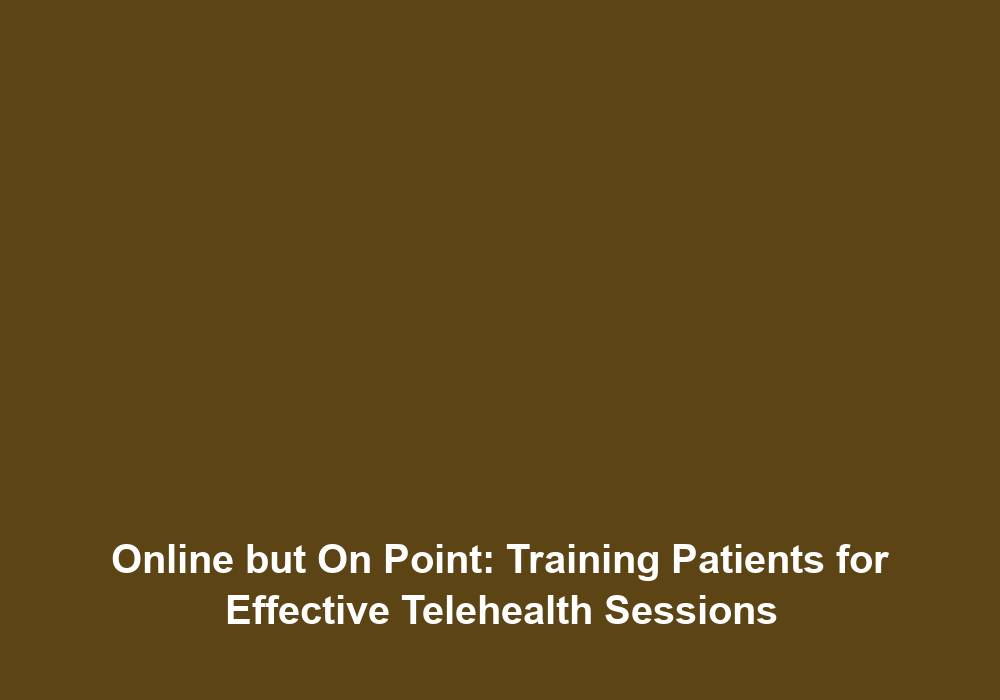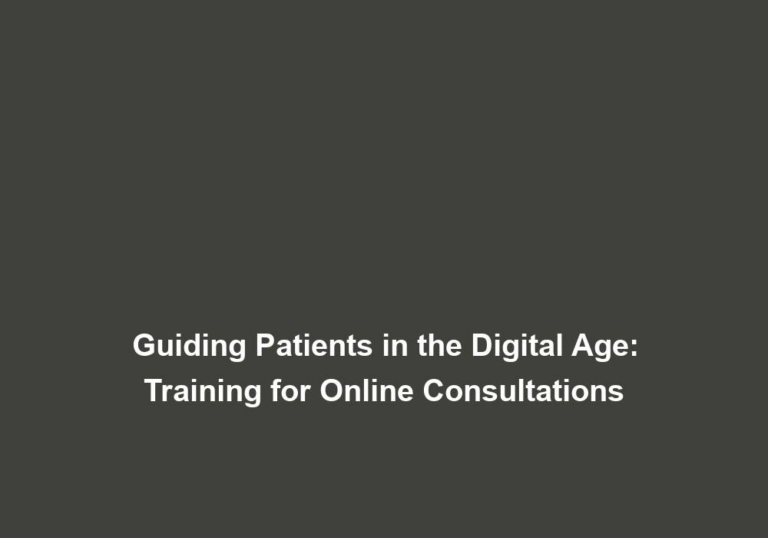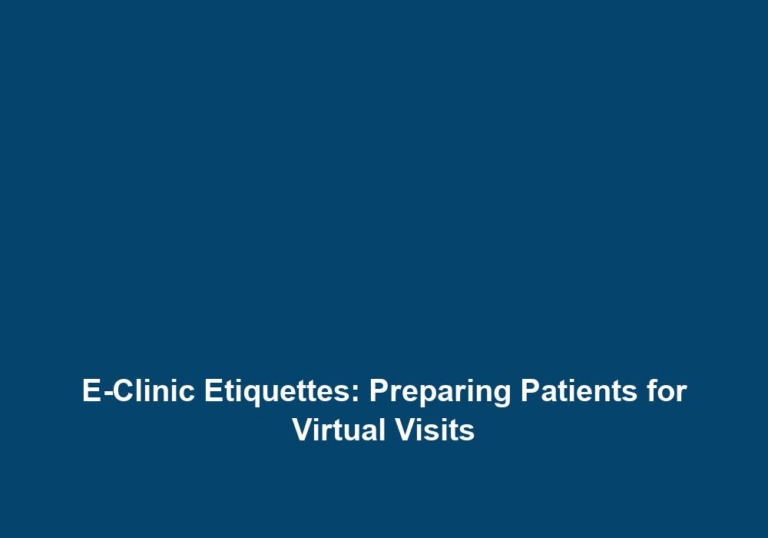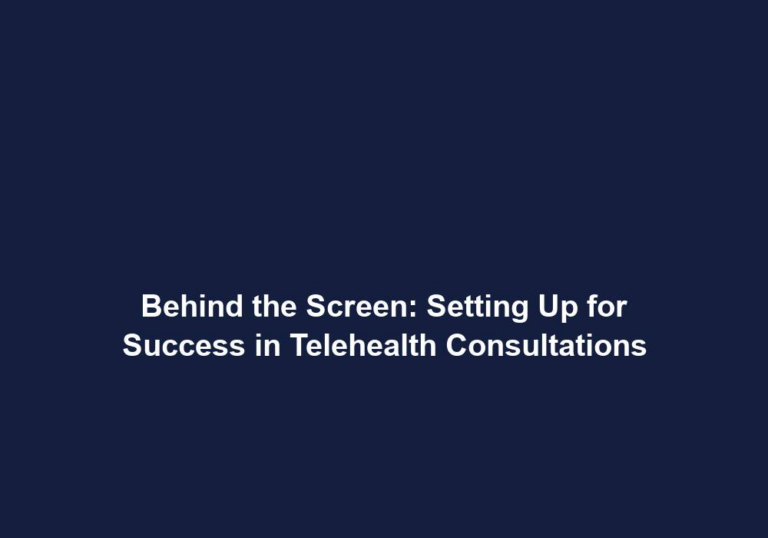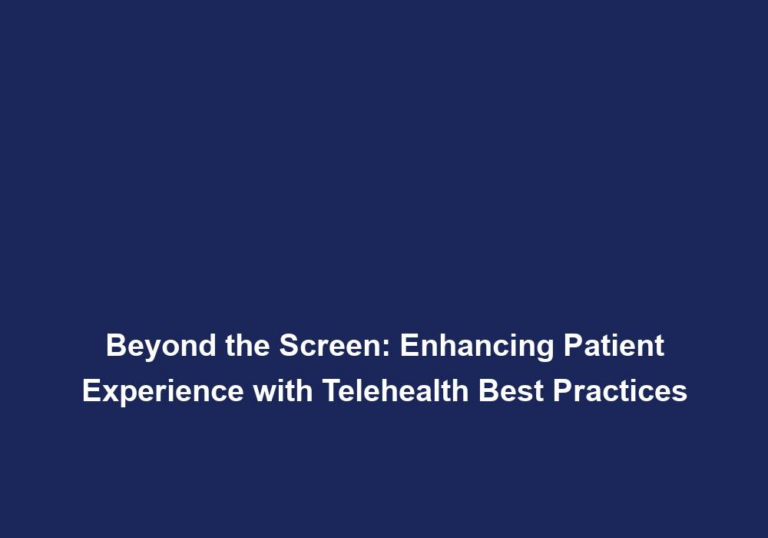Online but On Point: Training Patients for Effective Telehealth Sessions
With the rapid advancement of technology, the healthcare industry has witnessed a significant shift towards telehealth services. Telehealth, also known as virtual healthcare, allows patients to receive medical consultation and treatment remotely, using digital communication tools such as video conferencing. This mode of healthcare delivery has proven to be efficient, convenient, and cost-effective. However, to ensure the success of telehealth sessions, it is imperative to train patients on how to effectively utilize this technology. In this article, we will explore various strategies and tips for training patients for effective telehealth sessions.
Understanding the Basics of Telehealth
Before diving into the training process, it is essential to provide patients with a comprehensive understanding of telehealth. This includes explaining the concept, benefits, and limitations of telehealth services. Patients should be aware that telehealth consultations aim to replicate in-person visits as closely as possible, providing an alternative means of receiving healthcare without the need for physical presence.
To fully grasp the concept of telehealth, patients should be educated about the advantages it offers. These benefits include increased accessibility, as patients can receive medical care from the comfort of their homes, saving time and effort associated with traveling. Telehealth also promotes continuity of care, allowing patients to maintain regular appointments and follow-ups without disruption. It is important to emphasize that while telehealth has its advantages, there may be limitations in terms of physical examinations and certain procedures that require in-person visits.
Technical Requirements and Setup
To effectively participate in telehealth sessions, patients must have access to the necessary technology and a stable internet connection. It is crucial to educate patients on the technical requirements, such as having a smartphone, tablet, or computer with a working camera and microphone. Patients should also be informed about the minimum internet speed required for smooth video conferencing.
In addition to the hardware requirements, patients should be guided through the process of setting up the necessary software or applications. This may involve downloading and installing specific telehealth platforms or apps. Providing step-by-step instructions, accompanied by screenshots or tutorial videos, can greatly enhance the training process and ensure that patients are able to navigate the technology without difficulty.
Privacy and Security Measures
When it comes to telehealth, patient privacy and data security are of utmost importance. Patients must understand the measures in place to protect their personal health information during telehealth sessions. Emphasize the importance of using secure internet connections, avoiding public Wi-Fi networks, and regularly updating their devices and software to ensure maximum security.
Furthermore, patients should be educated on the importance of maintaining privacy during telehealth sessions. Encourage them to find a quiet and private space for their consultations, away from potential eavesdroppers or interruptions. Discussing the significance of using headphones or earbuds to prevent others from overhearing the conversation can be helpful.
To provide patients with a sense of assurance, it is important to explain the privacy and security protocols followed by healthcare providers and telehealth platforms. This may include encryption of data, adherence to privacy regulations, and secure storage of patient information. By addressing these concerns, patients can feel more confident in the confidentiality of their telehealth sessions.
Familiarizing Patients with Telehealth Tools
Once patients have a basic understanding of telehealth and the necessary technical requirements, it is crucial to familiarize them with the specific tools and features they will encounter during telehealth sessions. This can include demonstrating how to log into the telehealth platform, accessing appointment schedules, and joining video conferences.
In addition to the basic functionalities, patients should be guided on how to navigate various telehealth features, such as sharing documents, images, or test results during the session. Educate them on how to use the chat or messaging functions to communicate with healthcare providers if needed. Ensuring patients are comfortable and confident in utilizing these tools will enhance the overall telehealth experience.
To further enhance patient understanding, healthcare providers can provide resources such as user manuals or video tutorials that explain the various features and functions of the telehealth platform. This will enable patients to explore the tools at their own pace and refer back to the resources whenever they need assistance.
Conducting Mock Sessions
To further reinforce the training process, conducting mock telehealth sessions can be extremely beneficial. Simulate a telehealth consultation scenario, providing patients with an opportunity to practice using the telehealth tools and interface. This can help them become more familiar with the process, reducing any potential anxiety or confusion during actual sessions.
During these mock sessions, healthcare providers or support staff can play the role of the patient, allowing patients to practice navigating through the telehealth platform and conducting a virtual consultation. Encourage patients to ask questions, seek clarification, or address any concerns they may have. This hands-on training approach can significantly improve patient confidence and readiness for telehealth sessions.
Troubleshooting and Technical Support
Despite thorough training, patients may encounter technical difficulties or face challenges during telehealth sessions. It is crucial to provide them with readily accessible technical support options. This can be in the form of a dedicated helpline, email support, or live chat assistance. Ensure patients are aware of these support channels, providing them with contact information and operating hours.
Moreover, consider creating an FAQ section or a knowledge base on your website or telehealth platform. This can address common technical issues, troubleshooting steps, and frequently asked questions. Providing patients with self-help resources can empower them to resolve minor technical concerns independently, minimizing any disruptions during telehealth sessions.
By offering comprehensive technical support, healthcare providers demonstrate their commitment to ensuring a smooth and uninterrupted telehealth experience for patients. This not only resolves any immediate technical issues but also instills a sense of trust and reliability in the telehealth service.
Conclusion
Training patients for effective telehealth sessions is essential for the widespread adoption and successful implementation of telehealth services. By educating patients on the basics of telehealth, technical requirements, privacy and security measures, and familiarizing them with telehealth tools, healthcare providers can ensure seamless and productive telehealth consultations. Incorporating mock sessions and offering comprehensive technical support further enhances the patient experience. As telehealth continues to revolutionize healthcare, empowering patients with the knowledge and skills to embrace this technology is paramount.

